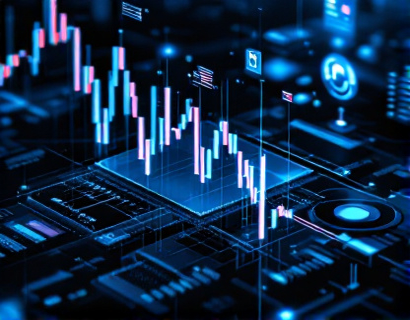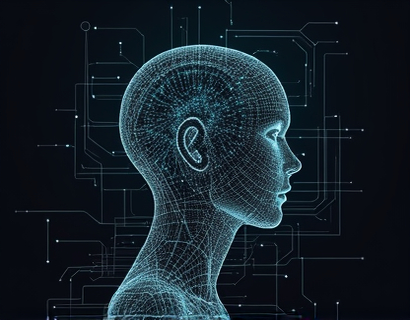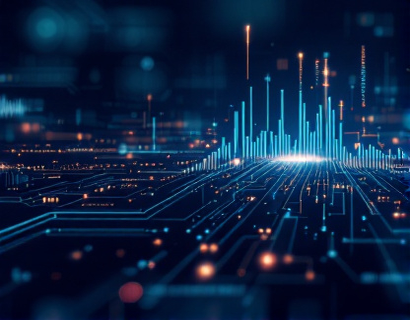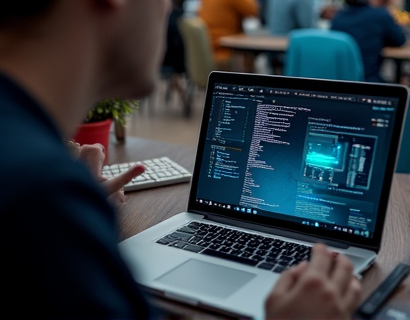Ethereum Layer 2: 2025 Insights for Developers and Enthusiasts on Scalability and Interoperability
As the Ethereum ecosystem continues to evolve, Layer 2 solutions have emerged as a critical component in addressing scalability and interoperability challenges. This comprehensive guide aims to provide developers and enthusiasts with essential insights and updates on the latest Layer 2 technologies, helping them navigate the dynamic and rapidly changing landscape of Ethereum.
Layer 2 solutions are designed to enhance the performance of the Ethereum network by processing transactions off the main chain, thereby reducing congestion and lowering transaction fees. These solutions have gained significant traction in 2025, with several promising projects and innovations shaping the future of Ethereum's scalability.
Understanding Layer 2 Fundamentals
To grasp the intricacies of Layer 2 solutions, it's essential to understand the basic concepts. Layer 2 refers to protocols and technologies built on top of the main blockchain (Layer 1) to improve efficiency and capacity. These solutions do not alter the underlying blockchain but rather work in tandem to offload certain processes, such as transaction validation and smart contract execution.
There are several types of Layer 2 solutions, each with its unique approach to enhancing scalability. These include state channels, sidechains, and rollups. State channels allow for multiple transactions to occur off-chain, with only the final state being recorded on the main chain. Sidechains are separate blockchains that can interoperate with Ethereum, enabling assets to be transferred between chains. Rollups, on the other hand, bundle multiple transactions into a single transaction on the main chain, significantly reducing gas costs and increasing throughput.
Rollups: The Current Frontrunners
Among the various Layer 2 solutions, rollups have gained considerable attention in 2025. Rollups are particularly promising due to their ability to process a large number of transactions off-chain while maintaining the security and finality of the Ethereum main chain. There are two primary types of rollups: Optimistic Rollups and ZK Rollups.
Optimistic Rollups assume that all transactions are valid and only challenge invalid transactions. This approach allows for higher throughput but requires a grace period during which challenges can be raised. ZK Rollups, or Zero-Knowledge Rollups, use cryptographic proofs to verify the validity of transactions, eliminating the need for a grace period. This results in faster confirmation times and lower latency.
Both types of rollups have seen significant adoption and development in 2025. Projects like Optimism and Arbitrum have led the way in Optimistic Rollups, while zkRollup and StarkWare have been at the forefront of ZK Rollups. These solutions have not only improved transaction throughput but also reduced fees, making Ethereum more accessible to a broader range of users and developers.
Interoperability: Bridging the Gap
Interoperability is another crucial aspect of Layer 2 solutions, enabling seamless interaction between different blockchain networks. In 2025, several initiatives have focused on enhancing interoperability within the Ethereum ecosystem and beyond. Cross-chain bridges and protocols have become increasingly sophisticated, allowing for the transfer of assets and data between Ethereum and other blockchains.
One notable development is the Polkadot ecosystem, which, although not exclusively an Ethereum Layer 2 solution, has significant implications for interoperability. Polkadot's relay chain and parachains enable different blockchains to connect and interact, facilitating the transfer of assets and data. This interoperability is crucial for building a decentralized web where various blockchain networks can work together harmoniously.
Within the Ethereum ecosystem, projects like Cosmos and Binance Smart Chain have also made strides in interoperability. However, the focus on Layer 2 solutions has led to more specialized cross-chain solutions, such as Wrapped Ethereum (WETH) and cross-chain atomic swaps, which allow Ethereum assets to be used on other blockchains without the need for centralized exchanges.
Developer Tools and Ecosystem Support
For developers looking to leverage Layer 2 solutions, a robust ecosystem of tools and resources is essential. In 2025, several platforms and libraries have been developed to simplify the integration of Layer 2 technologies into decentralized applications (dApps). These tools help developers overcome the complexity of Layer 2 protocols and focus on building innovative applications.
For Optimistic Rollups, the Optimism SDK and the Arbitrum SDK provide comprehensive libraries and APIs for developers. These SDKs offer functionalities such as transaction broadcasting, state management, and error handling, making it easier to deploy and manage dApps on Optimistic Rollup chains. Similarly, for ZK Rollups, the zkRollup SDK and StarkWare's development tools offer similar benefits, streamlining the development process and reducing the learning curve.
Additionally, community-driven platforms like Ethereum Stack Exchange and GitHub repositories have become invaluable resources for developers. These platforms facilitate knowledge sharing, bug fixing, and collaboration, fostering a vibrant and supportive developer community.
Challenges and Considerations
While Layer 2 solutions offer significant benefits, they also come with their own set of challenges and considerations. One of the primary concerns is the complexity of integrating these solutions into existing dApps. Developers need to stay updated with the latest protocols and tools, which can be time-consuming and resource-intensive.
Another challenge is the potential for fragmentation within the Layer 2 ecosystem. With multiple rollup projects and interoperability protocols, there is a risk of creating a fragmented landscape where different solutions operate in silos. This fragmentation can hinder the overall adoption and utility of Layer 2 technologies.
Security is also a critical factor. While Layer 2 solutions aim to enhance security by offloading certain processes, they introduce new vulnerabilities that must be carefully managed. Developers must thoroughly test and audit their implementations to ensure the integrity and security of their applications.
Future Outlook: Trends and Predictions
Looking ahead, the Layer 2 space is poised for significant growth and innovation in 2025 and beyond. One key trend is the continued improvement of rollup technologies, with a focus on reducing latency and increasing throughput. ZK Rollups, in particular, are expected to see advancements in zero-knowledge proof generation, making them even more efficient and scalable.
Interoperability will remain a top priority, with efforts to create more seamless and standardized cross-chain solutions. The development of interoperability protocols that go beyond Ethereum, such as the InterPlanetary File System (IPFS) and decentralized data storage solutions, will further enhance the ecosystem's capabilities.
Another area of growth is the integration of Layer 2 solutions with other blockchain technologies and decentralized finance (DeFi) protocols. As more projects adopt Layer 2 technologies, we can expect to see more sophisticated and user-friendly DeFi applications that leverage the benefits of scalability and low fees.
Lastly, the regulatory landscape will continue to influence the development and adoption of Layer 2 solutions. Clear and supportive regulations can accelerate innovation and adoption, while overly restrictive measures could hinder progress. Developers and enthusiasts must stay informed about regulatory developments to navigate this evolving environment effectively.
In conclusion, Layer 2 solutions are a vital component of Ethereum's future, addressing scalability and interoperability challenges with innovative technologies. For developers and enthusiasts, staying informed and adaptable is key to thriving in this dynamic ecosystem. By leveraging the latest tools and best practices, the community can continue to push the boundaries of what's possible on the Ethereum network.










































